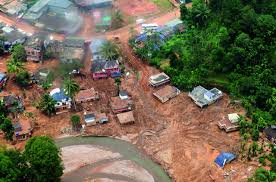Centre’s expert panel recommends environmental nod for twin-tunnel road near Wayanad landslide site in Kerala

The Centre’s Expert Appraisal Committee (EAC) recently recommended environmental clearance for the twin-tunnel road project connecting Anakkampoyil, Kalladi, and Meppadi in Kerala. This 8.75-kilometer tunnel will create a direct, safer road link between Kozhikode and Wayanad. The project will bypass the landslide-prone Thamarassery Ghat section of National Highway 766. While it promises better connectivity and reduced travel time, the project has raised concerns among environmentalists and locals. They worry about its location near fragile ecological zones and recent landslide sites.
Project Background and Importance
The twin-tunnel project is part of a Rs 2,134 crore plan to improve road infrastructure in Kerala’s hilly regions. Currently, the route between Kozhikode and Wayanad faces frequent traffic jams and long travel times. Landslides make the road dangerous, especially during monsoons. The tunnel will avoid these problems by providing an underground passage beneath the hills. This will significantly cut travel distance and time.
After completion, the tunnels will allow smooth transit and reduce vehicle emissions. Shorter travel time means less fuel consumption and lower pollution. The project will also create an alternative route that remains safe during heavy rains. It will boost economic activity by improving access for tourists, traders, and residents.
Environmental Concerns and Expert Advice
Despite the benefits, the project passes through sensitive and landslide-prone areas. Wayanad has suffered massive landslides in recent years, especially in 2019 and 2024. These events caused deaths, displacement, and ecological damage.
The EAC reviewed the project carefully. They approved environmental clearance but imposed strict conditions. Construction must avoid vibrations and disturbances that might trigger landslides. The committee emphasized protecting the local ecosystem.
The EAC also ordered close monitoring of endangered wildlife, including the Banasura Chilappan bird. It stressed protecting wildlife corridors, such as the Appankappu elephant corridor. Excavation must follow guidelines from the Central Institute of Mining and Fuel Research (CIMFR) to prevent soil erosion and geological damage.
Opposition from Environmental Groups and Locals
Despite the EAC’s approval, opposition remains strong. Environmentalists say the impact studies are outdated and incomplete. They argue the environmental impact assessment (EIA) lacked input from multiple disciplines. Critics feel it ignored long-term landslide risks and ecological effects.
The Wayanad Prakrithi Samrakshana Samithi, a local environmental group, plans to challenge the clearance in court. They believe the mitigation measures lack detail and strength. The group fears forest loss, disruption of wildlife habitats, and damage to fragile ecosystems.
Indigenous communities in the area also worry about displacement and loss of livelihood. They call for better consultation and safeguards to protect their rights.
Economic and Social Benefits
Economically, the twin-tunnel road offers many advantages. It will reduce travel distance and time between Kozhikode and Wayanad, improving trade and tourism. Wayanad is famous for its natural beauty and cultural heritage. Better roads will attract more visitors, boosting local businesses.
Socially, the tunnel will ease the hardships of daily commuters and local residents. Current roads are long and risky, especially during monsoons. Improved access will make emergency services, healthcare, and education more reliable. This will enhance the overall quality of life.
Still, these benefits must balance with environmental and social costs. Poor management could cause permanent damage to the ecosystem. This would threaten both nature and the local economy.
Project Details and Timeline
Dilip Buildcon Limited, an experienced infrastructure firm, will handle construction. The project should take about four years. The engineers will use advanced techniques to manage the hilly terrain and unstable geology.
They plan controlled blasting and soil stabilization to reduce risks. Water drainage will get special attention to prevent erosion. The tunnel will include safety features like emergency exits and ventilation. It will also allow safe passage for wildlife.
Finding the Right Balance
The Wayanad twin-tunnel project highlights the challenge of balancing development and conservation. The region needs better roads for economic growth and social welfare. At the same time, it hosts a fragile ecosystem vulnerable to disturbance.
The EAC’s conditional clearance shows how careful planning can help protect the environment. It also stresses the need for transparent, science-based decisions. Multiple stakeholders, including locals and experts, must stay involved.
What Lies Ahead
The Ministry of Environment, Forest and Climate Change (MoEFCC) will issue the final clearance based on the EAC’s advice. Meanwhile, environmentalists’ legal challenge may delay the project or force revisions.
If managed well, this project could become a model for sustainable infrastructure in sensitive areas. It can prove that engineering and environmental protection can go hand in hand.
On the other hand, ignoring environmental concerns could cause disasters. Landslides, habitat loss, and social conflicts could worsen. Continuous monitoring and community engagement will be essential throughout the project.






